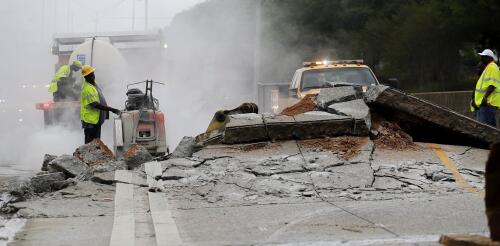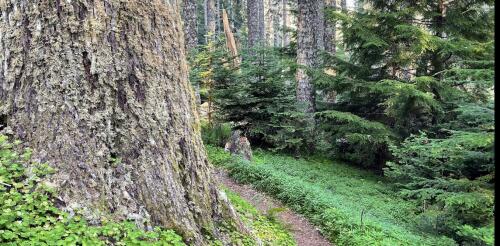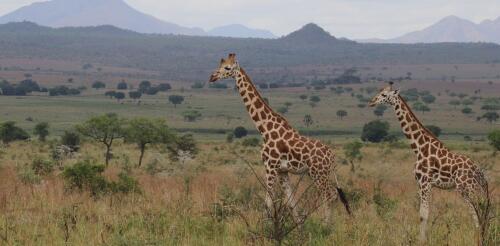Roads
Summer 2024’s record heat is creating problems for transportation infrastructure, from roads to rails. New York’s Third Avenue Bridge, which swings open for ship traffic on the Harlem River, was stuck for hours after its metal expanded in the heat and it couldn’t close. Roads have buckled on hot days in several states, including Washington and Wisconsin. Amtrak warned passengers to prepare for heat-related problems hours before a daylong outage between New York and New Jersey; the risks to power lines and rails during high temperatures are a growing source of delays for the train system. It doesn’t help that the worsening heat is hitting a U.S. infrastructure system that’s already in trouble. The American Society of Civil Engineers gave U.S. infrastructure an overall grade of C- in its latest national Infrastructure Report Card, released in 2021. While there has been some improvement – about 7.5% of U.S. bridges were in poor condition, compar...
As intense heat breaks records around the world, a little-reported fact offers some hope for cooling down cities: Under even the most intense periods of extreme heat, some city blocks never experience heat wave temperatures. How is this possible? Civilizations have recognized the power of cities to heat themselves up and cool themselves for centuries. City architects in ancient Rome called for narrowing streets to lessen late afternoon temperatures. Narrow streets were found to cool the air by limiting the area exposed to direct sunlight. The whitewashed architecture of the Greek Isles demonstrates another long-practiced strategy. Light-colored walls and roofs can help cool cities by reflecting incoming sunlight. Whitewashed buildings on the Greek island of Folegandros help deflect the heat rather than absorbing it. Etienne O. Dallaire via Wikimedia, CC BY In hot and humid regions of the southern...
Forests are an essential part of Earth’s operating system. They reduce the buildup of heat-trapping carbon dioxide in the atmosphere from fossil fuel combustion, deforestation and land degradation by 30% each year. This slows global temperature increases and the resulting changes to the climate. In the U.S., forests take up 12% of the nation’s greenhouse gas emissions annually and store the carbon long term in trees and soils. Mature and old-growth forests, with larger trees than younger forests, play an outsized role in accumulating carbon and keeping it out of the atmosphere. These forests are especially resistant to wildfires and other natural disturbances as the climate warms. Most forests in the continental U.S. have been harvested multiple times. Today, just 3.9% of timberlands across the U.S., in public and private hands, are over 100 years old, and most of these areas hold relatively little carbon compared with their potential. The Biden administration is m...
At hundreds of wildlife rehabilitation centers across the U.S., people can learn about wild animals and birds at close range. These sites, which may be run by nonprofits or universities, often feature engaging exhibits, including “ambassador” animals that can’t be released – an owl with a damaged wing, for example, or a fox that was found as a kit and became accustomed to being fed by humans. What’s less visible are the patients – sick and injured wild animals that have been admitted for treatment. Each year, people bring hundreds of thousands of sick and injured wild animals to wildlife rehab centers. Someone may find an injured squirrel on the side of the road or notice a robin in their backyard that can’t fly, and then call the center to pick up an animal in distress. We study ecology and biology, and recently used newly digitized records from wildlife rehabilitation centers to identify the human activities that are most harmful to...
Nearly 6,000 years ago, our ancestors climbed arid rocky outcrops in what is now the Nigerian Sahara and carved spectacularly intricate, larger-than-life renditions of giraffes into the exposed sandstone. The remarkably detailed Dabous giraffe rock art petroglyphs are among many ancient petroglyphs featuring giraffes across Africa – a testament to early humans’ fascination with these unique creatures. We are still captivated by giraffes today, but many of these animals are at risk, largely due to habitat loss and illegal hunting. Some are critically endangered. To understand how giraffes are faring across Africa, conservation ecologists like me are studying how they interact with their habitats across vast geographic scales. We use space-age technology and advanced statistical approaches that our ancient ancestors could have scarcely imagined to understand how giraffes can better coexist with people. Giraffes are featured...




